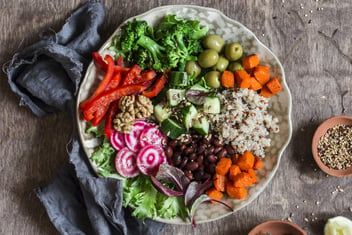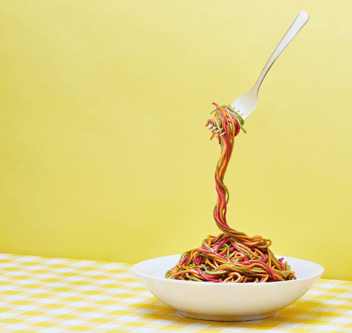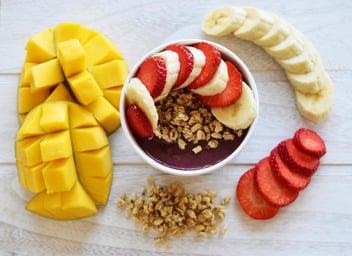Food Trends 101: Is Keto the new Paleo?
Learn about the Keto diet and why it is being claimed as the new Paleo
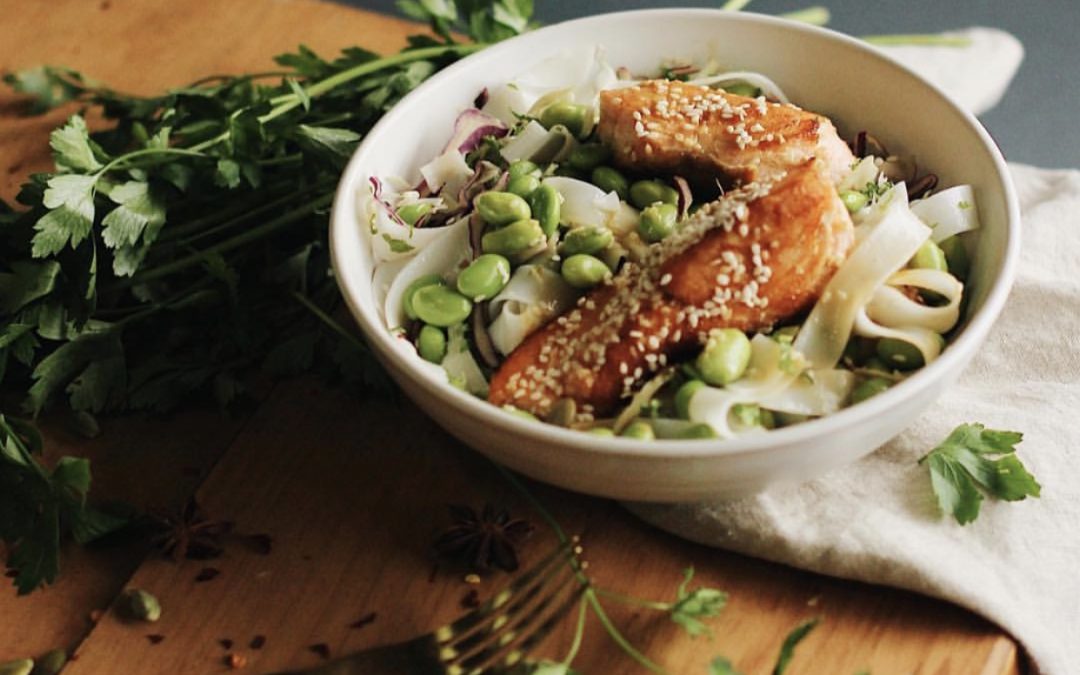
When we hear the words ‘healthy diet’, one of the first things that comes to mind is ‘no fat’. But did you know that in reality, sufficient amounts of good fat are essential to our body? They keep us energized while helping us achieve the body composition we desire. Lately, several diets that focus around the “high-fat low-carb” approach are trending hard. Among them is the ketogenic, or “keto” for short. Here we breakdown what it's all about, and whether it's a trend you should be thinking about when developing products and planning your menu.
What is the Keto diet
The Keto diet is the newest fad when it comes to healthy eating. In fact, it is alreading being heralded as the next Paleo! With the explosion of paleo friendly goods in cafés and restuarants, we're predicting that we will start seeing Keto goods, too. The idea of the Keto diet is to eat high amounts of good fat, moderate amounts of protein, and very little carbohydrates.
How does this Keto diet actually work?
When you drastically reduce your carbohydrate intake, your body is forced to look for an alternative for its main source of energy. In this case - fats. Specifically, your body fat - which is why it's become such a popular diet. This process is called ketosis. When in the metabolic state of ketosis, the body burns its stored fats and converts them into glucose for energy. The fats are also converted into ketone bodies (or ketones) in the liver, supplying energy to your brain.
As explained by Brian St. Pierre, M.S., R.D., C.S.C.S., the director of performance nutrition at Precision Nutrition:
“Typically, our bodies run on glucose, which comes from carbohydrates. But when fewer than 10 percent of our calories come from carbs, our bodies run on ketones, which come from fat in food or stored in our bodies.”
Simply put, the ketogenic diet turns your body into a fat-burning machine. This is the reason why it has been recently touted as a must-try diet for effective weight loss. When on a keto diet, you will feel less hungry and will have reduced food cravings. This is because your appetite goes down when your body is following a high-fat and low-carb lifestyle.
How did the Keto diet start?
You may not know it but the keto diet was never really made to be a trend. It was originally developed in the 1920s to help children suffering from epilepsy. Multiple tests and trialls discovered that a lesser intake of carbohydrates decreases the frequency of epileptic seizures.
Today, the diet has taken off, as people have since discovered it is a very effective way to lose weight in a short period of time. There is also a growing movement fuelled by those wanting to reduce their dependence on carbs as an energy source, as some happy 'side effects' of the diet include better focus and mental clarity.
The Keto diet is also used to help treat diabetes. According to nutritionist Anthony Power, the Ketogenic diet is beneficial for people who are diabetic because fats do not impact insulin. The ketosis process, in fact, helps keep the insulin levels in the body really low.
"The World Health Organisation currently estimates that 400 million people worldwide have diabetes -- nearly half a billion people. Why? Because eating carbohydrates (which converts to glucose) then increases our blood sugar, increases our insulin, leads to weight gain and eventually heart disease and diabetes,” explains Power.
So, how do people eat the “Keto” way?
What’s good about the Keto diet is its followers don’t need to count calories. The concept of it is simple - just limit carbohydrate intake to no more than 30 grams a day and up the daily intake of healthy fats. Here’s a common dietary ratio:
- 60% fat
- 35% protein
- 5% carbohydrates
Now when we say healthy fats, we mean saturated or monounsaturated fats, not trans fats found in processed foods. Think peanut butter, macadamia nuts, avocado, butter, and egg yolks. Fattier slices of organic meat are also recommended, together with full-fat milk products like unsweetened yogurt, cheese and sour cream.
Following the keto diet also means plenty of non-starchy veggies like spinach, broccoli, and mushrooms, and avoiding starchy vegetables, such as potatoes, squash, and carrots. Below is a keto food pyramid:
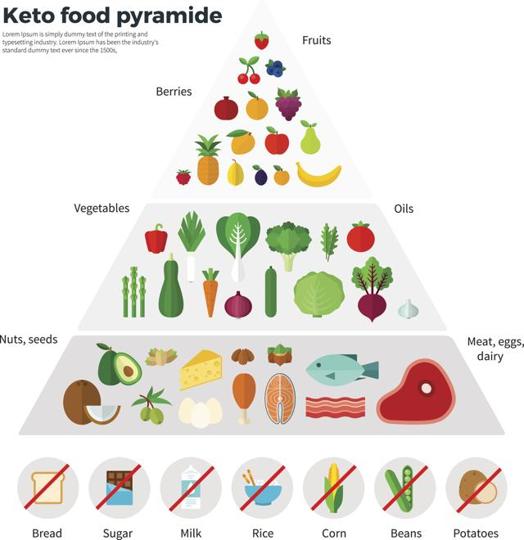
How can you serve keto meals on your restaurant menu?
These days, there are already several keto-friendly restaurants and cafes around, and many menu items either already fit the bill, or can be easily tweaked to ensure they are keto friendly. If you also want to include Keto items on your own restaurant menu, the only thing you have to remember is to avoid serving carbohydrate-rich foods, and make sure you can share key nutritional info for your customers - generally a meal considered keto will have 10g or less of carbs, and keto customers will be counting them to the gram!
It's really easy to allow menu items to fit the keto diet. For instance, a plate of smoked salmon with scrambled eggs and bacon cooked in butter would be a great breakfast meal option. A sirloin steak topped with all-natural eggs, avocadoes and tomatoes is another good option, too.
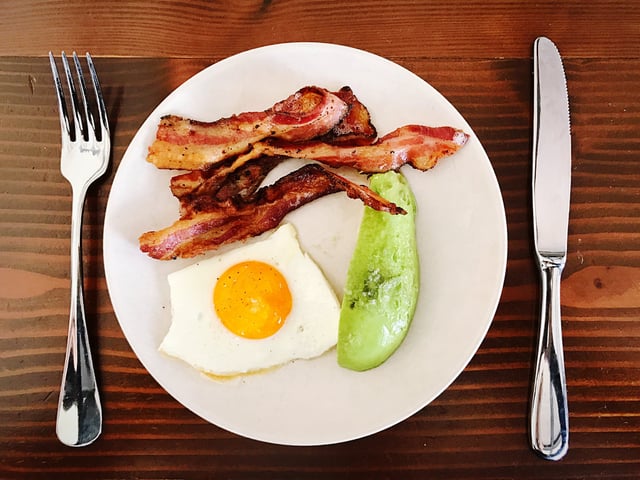
For lunch and dinner, meat with a veggie salad on the side (make sure you add some cheese, sour cream, or guacamole to it) should tick the boxes for customers, but there's lots of ways you can make it more exciting than just 'meat and two veg'. You could also serve an “UNwich” or "Naked Burger". An UNwich uses lettuce wraps instead of bread, reducing the carb content of a sandwich. Another good inclusion in your keto menu is a bacon cheeseburger, but of course, without a bun.
By simply promoting swaps like this on your menu, you could start attracting a whole segment of customers that are pretty choosey about where they dine, and loyal when they find somewhere that fits the bill.
Will Keto overtake Paleo as the next big food trend?
Possibly.
The Keto diet is a newcomer to the mainstream scene but it’s already seeing a lot of Paleo diet devotees make the switch, given the long list of health benefits it can provide and the clear scientific basis for the diet - this definitely helps reduce the 'fad' factor. It is, in fact, trending right now among many Hollywood celebrities. An analysis from Schieber Research even showed that there’s a rise in interest in high-fat, low-carb diets like the Keto diet in the last couple of months, and an evident loss of interest in Paleo. They had a look at the Keto diet trends in Google Trends and this is what they’ve found:
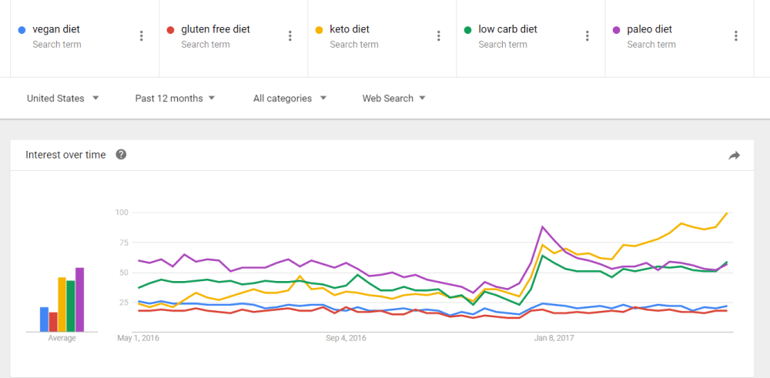
The yellow line (“keto diet”) is performing really well, overtaking the purple line, which is the Paleo diet.
Though this graph suggests that Keto is the new Paleo, let’s still keep in mind that the two are completely different diets. The Paleo diet is much easier to follow as it’s more focused going back to older principles of eating. While Paleo references ancient humans, the enduring factor is that your diet should come from whole, natural sources with no additives. The diet only needs you to avoid processed foods and consume high-quality foods that can boost your nutrient intake. The Keto diet, on the other hand, is much more intense and more difficult to maintain. However, many people who used to follow the Paleo diet have switched, seeing Keto as a more 'fine tuned' and scientific approach to maximising their health.
These two programs cater to different dietary requirements, but with the explosion of healthy additions to cafés and restaurants, like the now ubiquitous protein balls and green bowls, it could well be worth your while to lead the market in the keto trend and start offering menu swaps, and even specially made keto friendly snacks and treats.
Want to read more industry trends from us? Check out the Industry Insights section on our blog.
Categories
Trends
Avlya Jacob is a content writer at Ordermentum. When not working, she enjoys writing online novels and spending time with her husband.


